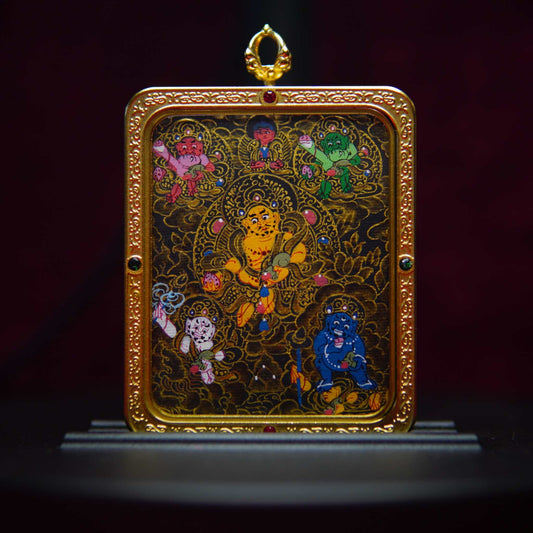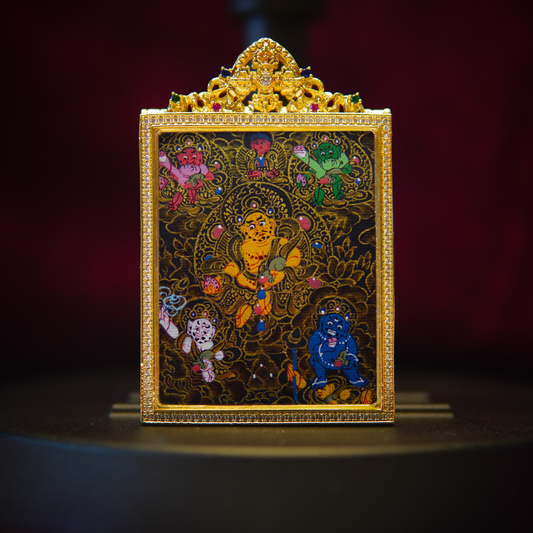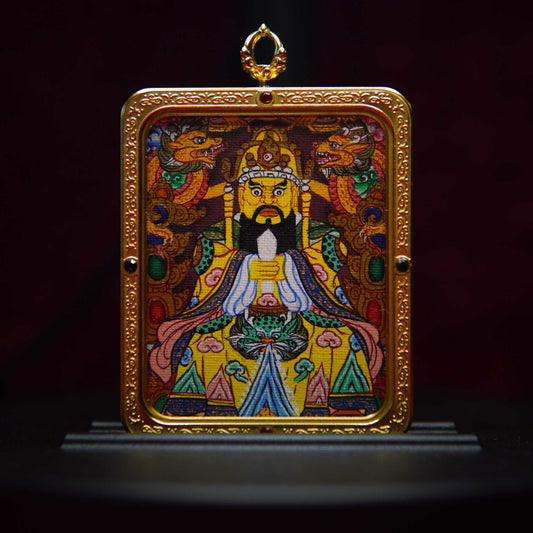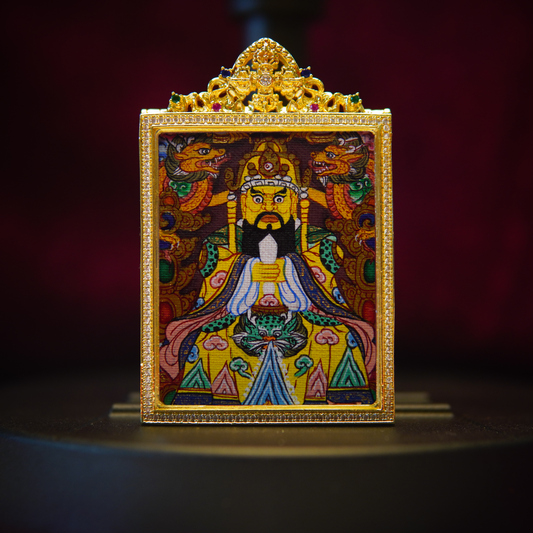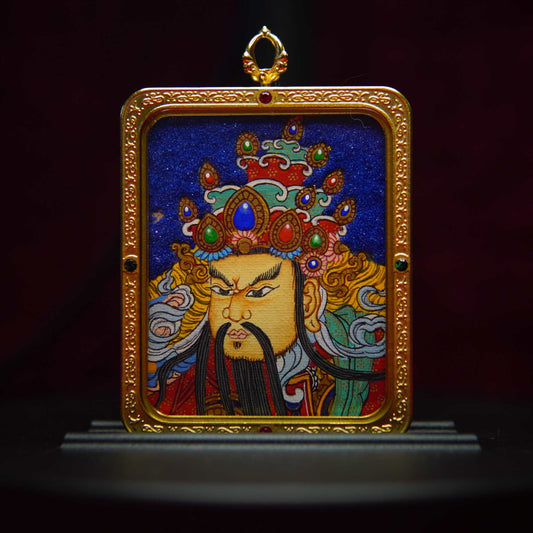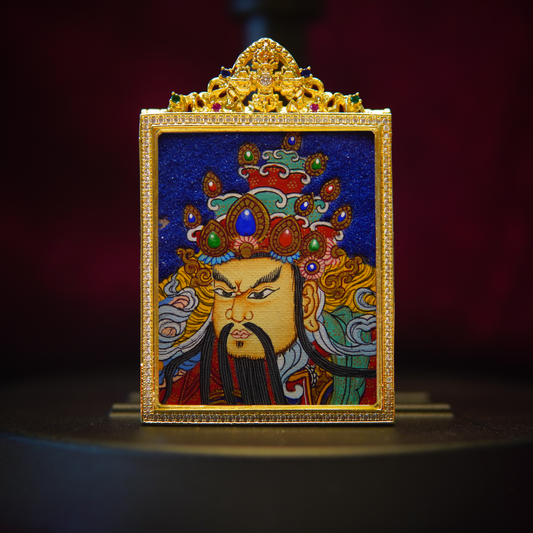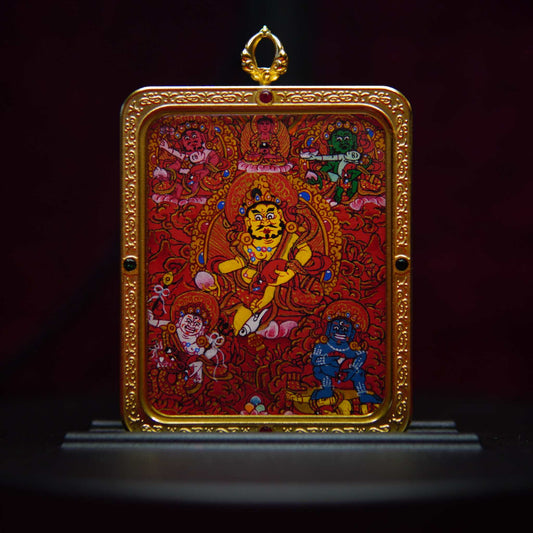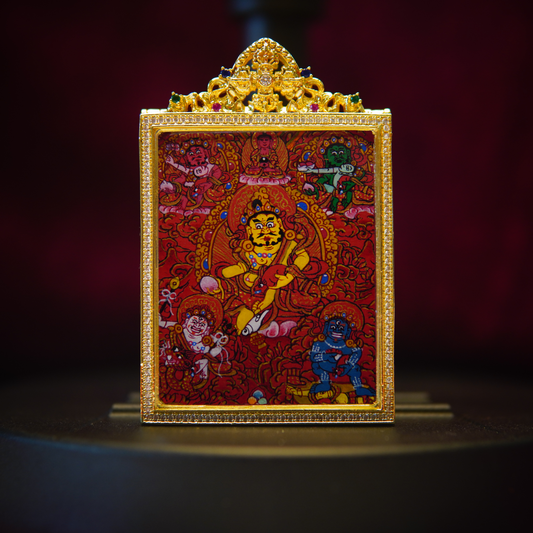マハーカーラ・タンカの意味と象徴:怒りの守護者を解読する
Tapitaチベット仏教において、マハーカーラ像は畏敬の念と崇敬の念を抱かせる存在です。一見すると恐ろしい容貌に威圧感を覚えるかもしれませんが、マハーカーラは慈悲の最も激しい形を体現しています。タンカ(聖なる巻物)に描かれたマハーカーラは、単なる装飾品ではありません。視覚的なマントラであり、精神的なツールであり、そして内なる変容の守護者なのです。
マハカーラとは誰ですか?
マハーカーラは怒りの神であり、慈悲の菩薩である観音菩薩(チェンレジ)の化身とされることが多い。二本腕、四本腕、六本腕、さらには白い体を持つ姿など、様々な姿で現れるが、いずれも仏法を守り、悟りへの障害を取り除くという共通の目的を持っている。
彼の怒りに満ちた表情、燃え盛る髪、突き出た目、そして武器は、暴力の象徴ではなく、むしろ悟りを開いた活動の象徴です。彼は純粋な慈悲の心から、修行者を守り、自我、無知、そして恐怖を切り裂きます。
マハーカーラタンカの象徴性
マハーカーラ・タンカの細部には、重層的な意味が込められています。ここでは、最も重要な象徴的要素をいくつかご紹介します。
- 黒または濃紺の体:法身(ダルマカーヤ)――究極の、すべてを吸収する現実の性質――を表します。また、怒りを智慧に変えることも象徴します。
- 頭蓋骨の冠: 5 つの毒(無知、執着、怒り、傲慢、嫉妬) と輪廻の 6 つの領域に対する制御を意味します。
- 燃える髪とオーラ:迷いや悪業を焼き払う、浄化の知恵の炎を表現します。
- 第三の目: 二元的な外見を超えて真実を見る、精神的な洞察力の象徴。
- 六本の腕(いくつかの形態) :あらゆる方向で迅速に行動して障害物を取り除き、実践者を保護する能力を表します。
- 髑髏杯とチョッパー(カルティカ) :髑髏杯には知恵の甘露が収められ、湾曲した刃は自我と執着を切り離します。
- 生首の花輪: 無数の妄想の破壊を意味します。
- 蓮華台座または足元の炎: 怒りの中にあっても、マハーカーラは純粋さと覚醒状態に根ざしていることを示します。
これらの要素が組み合わさって、霊的変容の鮮明な視覚的表現が生み出されます。マハーカーラの姿を瞑想することで、修行者は彼の守護力と恐れを知らない叡智を内面化することができます。
チベットの修行におけるマハーカーラの役割
チベットの寺院や家庭では、マハーカーラタンカは守護、明晰さ、そして障害の除去のために用いられます。祭壇、戸口の上、瞑想スペースなどに置かれることが多いです。僧侶たちは日々の儀式の中で、特に以下の目的でマハーカーラマントラを唱えます。
-
負のエネルギーを浄化する
-
重要な儀式を支援する
-
神聖な教えと誓い(サマヤ)を守る
-
リトリート中に実践者を支援する
多くの実践者は、精神的および感情的な危害に対する個人的な盾として、小さなマハーカーラタンカを持ち歩いたり、ペンダントを身に着けたりもします。
マハーカーラが今日でも重要な理由
めまぐるしく変化する現代社会において、マハーカーラは今もなお深い意味を持ち続けています。彼の力強い存在は、私たちに次のことを呼びかけます。
-
勇気を持って自分の恐怖に立ち向かう
-
気を散らす雑音を遮断する
-
もはや私たちの最高の道に役立たないものを燃やし尽くす
悟りの旅を続ける人々にとって、マハカーラは単なる守護者ではなく、内なる恐れのない知恵を映す鏡なのです。
結論:神聖なる保護の芸術
マハーカーラ・タンカは単なる聖なる芸術ではなく、精神的な強さを視覚的に体現したものです。それぞれの線、炎、そして頭蓋骨は、変容、守護、そして揺るぎない慈悲の物語を物語っています。
あなたが仏教の実践者、芸術品収集家、または精神的な探求者であろうと、マハーカーラの姿の背後にある象徴性を理解することで、悟りの道とのつながりを深めることができます。

